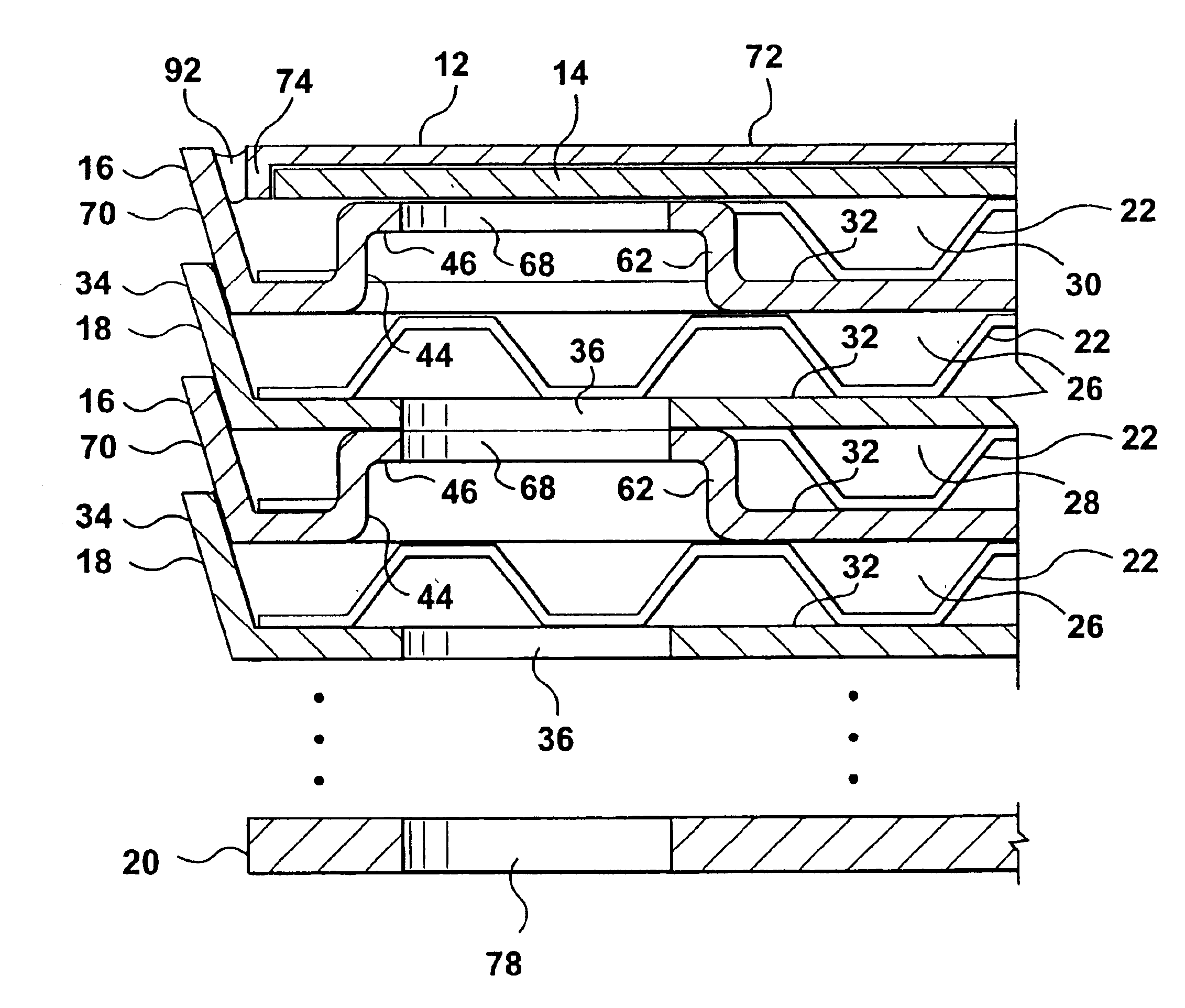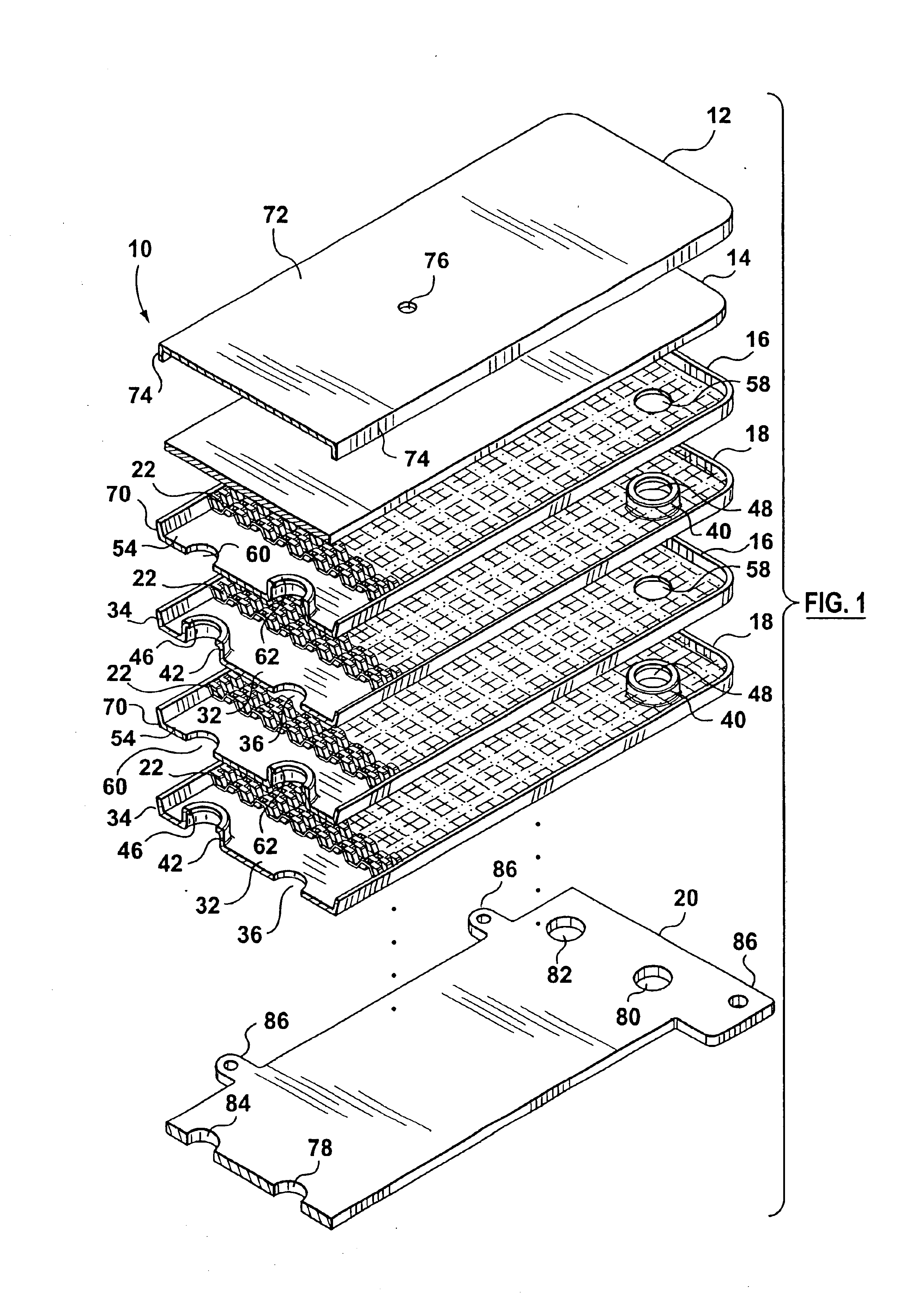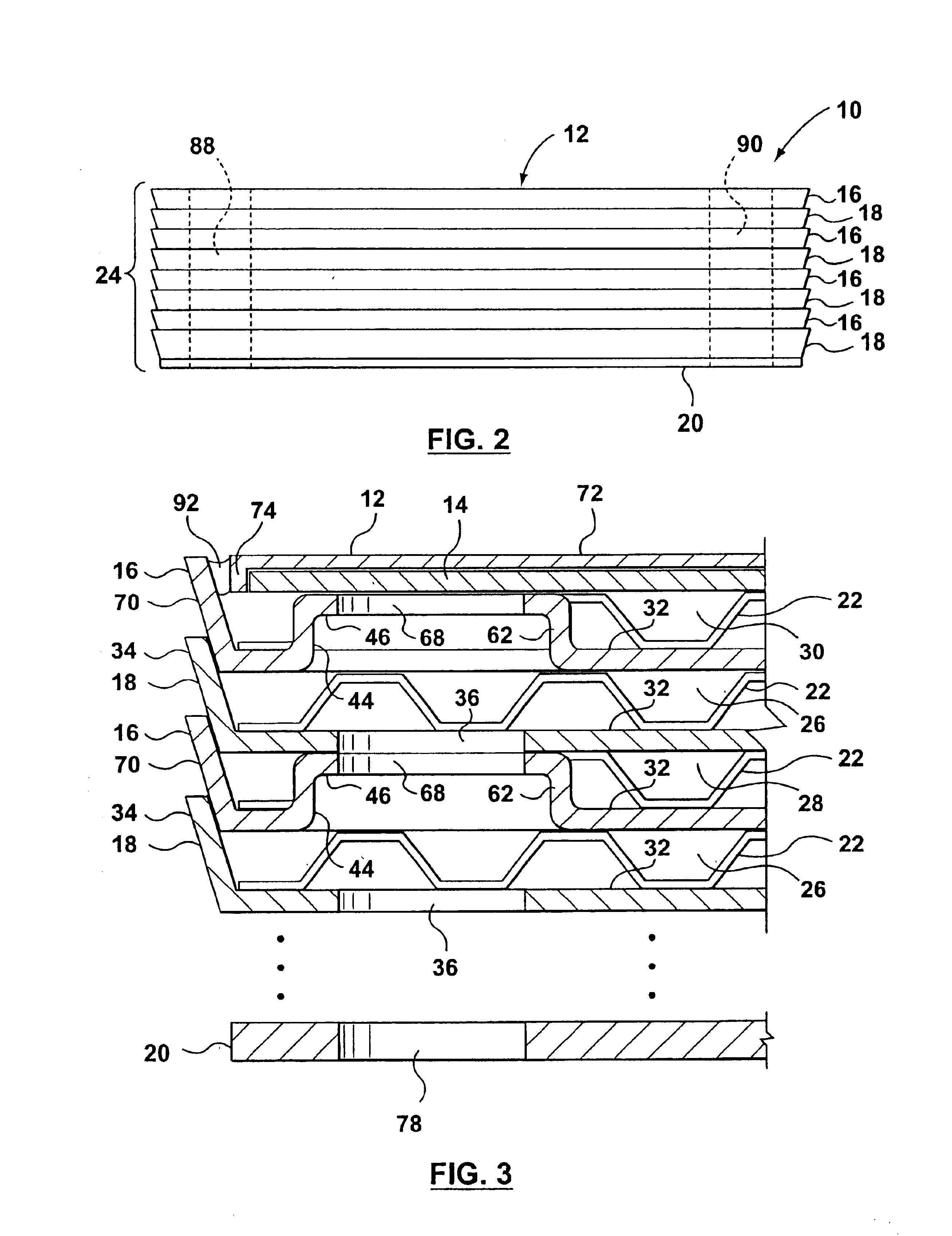Inverted lid sealing plate for heat exchanger
- Summary
- Abstract
- Description
- Claims
- Application Information
AI Technical Summary
Benefits of technology
Problems solved by technology
Method used
Image
Examples
Embodiment Construction
Referring firstly to FIG. 1, an exploded perspective view of a preferred embodiment of a stacked-plate type heat exchanger according to the present invention is generally indicated by reference number 10. The heat exchanger 10 includes an end plate 12, a reinforcing plate 14, a number of alternating nested dish plates 16 and 18, and a connector plate 20. Plates 12 through 20 are shown arranged vertically in FIG. 1, but this is only for the purposes of illustration. The heat exchanger 10 can have any orientation desired.
In one preferred embodiment, the plates 12-20 are each formed from braze clad aluminum or aluminum alloy, however, other materials such as stainless steel or copper alloy, for example, could also be used. With reference to FIG. 2, the dish-style heat exchanger plates 16 and 18 are alternatively stacked one next to the other to form a core heat exchanger stack 24. With reference to FIG. 3, first fluid flow channels 26 and second fluid flow channels 28 for respective fi...
PUM
 Login to View More
Login to View More Abstract
Description
Claims
Application Information
 Login to View More
Login to View More - R&D
- Intellectual Property
- Life Sciences
- Materials
- Tech Scout
- Unparalleled Data Quality
- Higher Quality Content
- 60% Fewer Hallucinations
Browse by: Latest US Patents, China's latest patents, Technical Efficacy Thesaurus, Application Domain, Technology Topic, Popular Technical Reports.
© 2025 PatSnap. All rights reserved.Legal|Privacy policy|Modern Slavery Act Transparency Statement|Sitemap|About US| Contact US: help@patsnap.com



